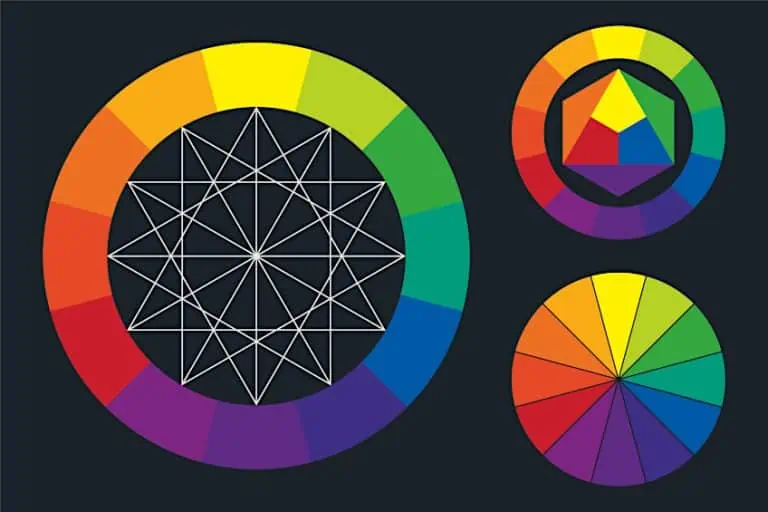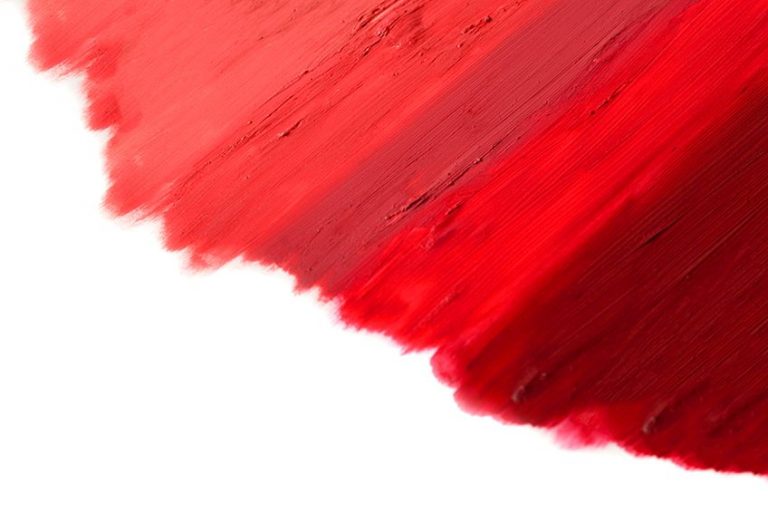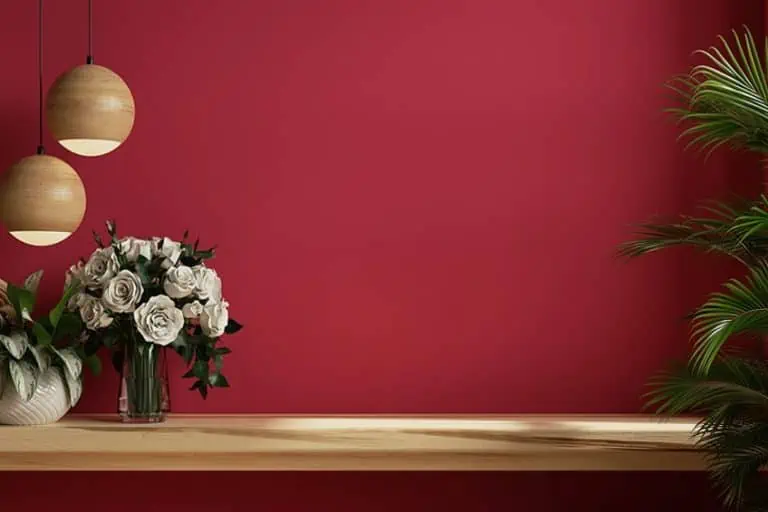Shades of Green Color – Creating a Vibrant Green Color Palette
This post may contain affiliate links. We may earn a small commission from purchases made through them, at no additional cost to you.
Green, the most predominant color in nature, also has multiple shades of green color. When used for painting and printing, the two colors that make green are blue or cyan and yellow, making it a secondary color. When it comes to light, as well as computer screens, it is an additive primary color and when combined with red and blue will create types of green. Read further to discover the many amazing shades of green color that are available.
Table of Contents
Green Color: A Brief History
Green colors, from emerald green to mint green have always held a fascination over man, and as with many of the more dominant colors, it has an interesting history. Over the years, many have attempted to create the perfect shade of green, and in the early days, it was an almost impossible color to come by. Some of the green color pigments have even been highly poisonous. Thankfully, it has come from that stage to the present, where it now represents health, freshness, and renewal.
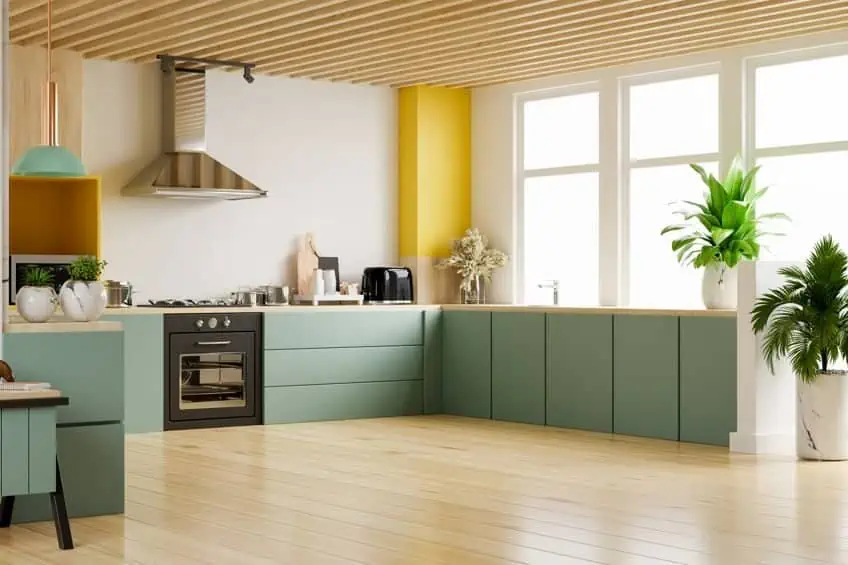
Let us delve into the ancient history of this mysterious color. Of course, Egypt has always played a major role in many areas of history. The ancient Egyptians had many religious beliefs, and the green color was seen as a sign of rebirth and renewal. There has been evidence discovered that they attempted to use the mineral malachite, which contained copper. This mineral was used on tomb wall paintings, and as eye paint. Unfortunately, this was expensive, and the color tended to eventually turn black.
The ancient Romans were a bit more ingenious and used copper plates soaked in wine. This created what is known as verdigris, a green color pigment that formed after it has been weathered over some time. This green color is the same as you would see on old coins or metal roofs that have been exposed to the elements over time.
This green pigment was then used in various applications from stained glass to mosaics.
Moving on to the Renaissance period, the green color was used to signify a person’s profession as well as social status. Red was more for the nobility, and brown was worn by the peasants. As mentioned, green was a sign of what profession you were in, so green was often worn by merchants and those in the banking industry and by the general so-called upper-class citizens or nobility. During this period, and more related to painting, green pigments were created from plants. However, these colors soon faded. In the 18th century, a Swedish chemist by the name of Carl Wilhelm Scheele developed a bright green color that later became quite popular.
Unfortunately, the pigment contained arsenite, which we know today is toxic, even deadly if exposed to it. This particular green pigment was used in many areas including paintings, fabrics, and toys. Some unexplained illnesses in those days are most probably linked to this very pigment. Some believe that this pigment contributed to Napoleon Bonaparte’s death as the wallpaper in his room contained the deadly green color pigment. Not stopping there, a similar toxic pigment was created known as Paris Green, and this replaced the bright green that Scheele created. Many famous artists like Monet and Renoir used this pigment in their paintings. Many believe that the pigment was to blame for Monet’s blindness, and was likely the cause of other health issues. Fortunately, this pigment was prohibited in the mid to late-1900s.
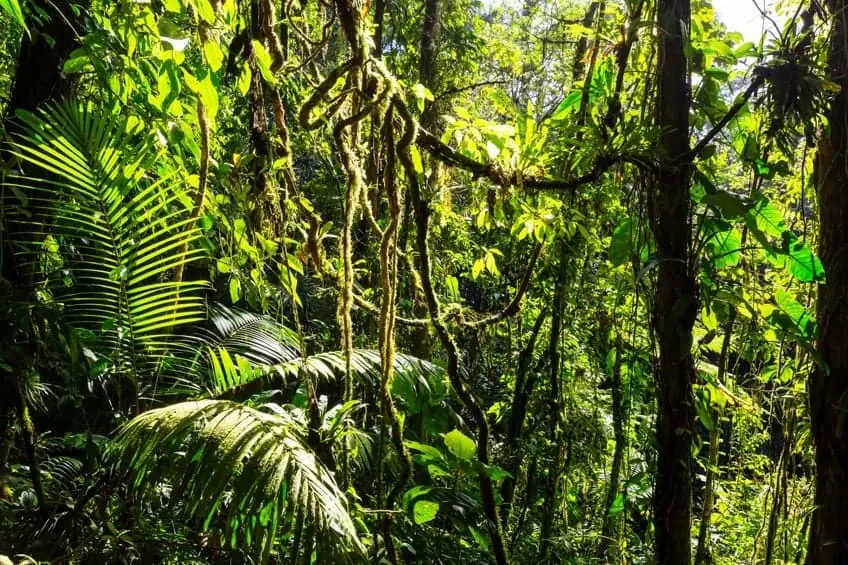
Moving forward, today the color green is associated more with environmental issues. The term most used by many is “going green”. However, when it comes to pigments, many of the products still contain some toxicity. A green color named Pigment Green 7 can be found in certain paper and plastics. If the colored items are ingested in any way, it could prove fatal as it contains chlorine. Another toxic example is Pigment Green 36 as well as Pigment Green 50, both containing toxic ingredients.
Despite these issues, green colors have retained their image of representing vitality, health, and renewal. A yellow-green shade named “Greenery” was voted the color of 2017 by the company Pantone. The color was a perfect representation of spring, lushness, and revival. The color green has also affected cultures worldwide. Green is the color of Ireland and is what everybody is using on St. Patrick’s day.
Green also has a strong link to Islam and can be found in many, if not all, of the flags that represent Islamic countries.
Green Colors: Psychology and Meaning
We have learned that various colors can evoke certain emotional responses, this is called color psychology. Some colors like red and orange are stimulating, while cool colors like blues and greens are more calming. However, some might relate to colors differently because of certain personal experiences. So, it influences each individual in different ways and depends on how you perceive color. In general, green colors represent nature and are refreshing and calming, particularly the lighter shades. Green stands for everything fresh and natural.

When considering how we see the color green, it is a color that we see more easily than others because it has a shorter wavelength, so our eyes do not need to adjust all that much to see it. Other connections to green include a link to wealth, health, good luck, jealousy, calmness, peacefulness, optimism, creativity, fertility, and nature. Green is also considered optimistic and motivating.
Jealousy is a negative association along with some illnesses, for example, everybody is familiar with the saying “turning green”. This saying can also be meant as “turning green with envy”, where green represents greed and jealousy.
Different shades of green are calming, even sedative, as it is less of a strain to recognize. For this reason, it has a certain sedative quality which is why the color green is often used in school, work, and hospital environments. When asked what your favorite color is, green is possibly one of the most favored colors along with blue. An interesting fact about green, many of the Macdonald’s restaurants in Europe have removed their red background and replaced it with a green one. This is supposed to symbolize their responsibility to the environment.
Popular Shades of Green Color
When it comes to the many types of green and creating a green color palette, the options available are almost endless. This is especially true for graphic design elements that are measured through the RGB values (Red, Green, Blue), also known as a hex code. These codes help identify each color name and all the green shades available. Below are a few of the more popular types of green, along with their green hex code. We also give you some fantastic color schemes for each shade.

Green Color
This particular green color can be categorized as medium to dark green. This is a standard green color when it comes to computer graphics. There are two other names this color is known for including office green and green W3C. This green paint color would work fantastically as a feature wall in your home, an aspect of interior design that is very trendy right now.
| Shade | Green Hex Code | CMYK Green Color Code | RGB Green Color Code | Green Color |
| Green | #008000 | 100, 0, 100, 50 | 0, 128, 0 |
Forest Green Color
A forest green color does tend to make you think of trees and forests, a deep, dark green that is associated with growth and freshness. The forest green color is often used in designs because of its affiliation with all things natural. If you want to make the forest green color stand out, then a shade of red will do nicely. This color could also be thought of as pine green, giving us a lush green atmosphere, particularly when paired with hunter green and sap green. The saturation of these shades is strong, like the depths of a misty forest. Forest and sap green are yellow greens, making them a little warmer than hunter green.
This combination is also perfect for Christmas themes, however, to create a more analogous green color palette, combine it with shades of green and blue.
| Shade | Green Hex Code | CMYK Green Color Code | RGB Green Color Code | Green Color |
| Forest Green | #228b22 | 76, 0, 76, 45 | 34, 139, 34 | |
| Hunter Green | #355e3b | 44, 0, 37, 63 | 53, 94, 59 | |
| Sap Green | #507d2a | 36, 0, 66, 51 | 80, 125, 42 |
Olive Green
The name of this color was first used somewhere between 1150 and 1500 and is naturally associated with the color of olive skin. Sometimes, olive green can be seen more as a pale brown, however, since it is located between yellow and green, it is more a shade of green. When mixing paints, olive green can be achieved by blending one part blue with three-parts yellow paint. You can then slowly add in a little red to create a deeper hue. The trick is not to add too much red as this could create more of a brown color.

Olive green can lend a certain sophistication when decorating the home, especially when paired with neutral colors like beige, light grays, or tan. Adding a touch of olive to a room can easily provide a little warmth to the room. The complementary colors will always make greens stand out, and olive green, reds, and violet colors will achieve this. Some more colors that go well with olive green include navy blue, maroon, and purple.
| Shade | Green Hex Code | CMYK Green Color Code | RGB Green Color Code | Green Color |
| Olive Green | #708238 | 14, 0, 57, 49 | 112, 130, 56 |
Jungle Green
You can already imagine what jungle green will look like, however; it can be a bit of a challenge to describe the color. This is because there are various hues of this particular color. You can have a look at the table below, you will see there are several variations to this color. These shades are cooler, meaning they are blue green. Seafoam green would work very well in this monochromatic color scheme, as would turquoise. These colors would be perfect to use when representing the depth of the ocean.
Since there is such a variety, jungle green is quite a versatile color that can be used for many things. For example, the color has been used for army uniforms.
| Shade | Green Hex Code | CMYK Green Color Code | RGB Green Color Code | Green Color |
| Jungle Green | #29ab87 | 76, 0, 21, 33 | 41, 171, 135 | |
| Dark Jungle Green | #1a2421 | 28, 0, 8, 86 | 26, 36, 33 | |
| Medium Jungle Green | #1c352d | 47, 0, 15, 79 | 28, 53, 45 | |
| Deep Jungle Green | #004b49 | 100, 0, 3, 71 | 0, 75, 73 | |
| Tropical Rainforest | #00755e | 100, 0, 20, 54 | 0, 117, 94 | |
| Amazon | #3b7a57 | 52, 0, 29, 52 | 59, 122, 87 |
Emerald Green
Maybe you are thinking of the Wizard of Oz and the Emerald City when considering this color. The color does tend to bring up vibrant images of the color green. Historically, emerald green has also been known by the following names:
- Imperial green
- Paris green
- Veronese green
Emerald green is a beautiful bright, medium green color that is darker than your lime green and brighter than olive green. The name itself first came about in 1598 and is associated with the emerald gemstone. Jade green is another gemstone shade of green that would pair beautifully with emerald.

Using emerald green can add a bit more energy and a fresh feeling to a room. The color also works well as a shade for clothing, especially for women’s formal wear, as it adds a certain elegance to the look. The color works well alongside other shades of green, but can also work well with the following colors:
| Shade | Hex Code | CMYK Color Code | RGB Color Code | Color |
| Pink | #ffc0cb | 0, 25, 20, 0 | 255, 192, 203 | |
| Peach | #ffe5b4 | 0, 10, 29, 0 | 255, 229, 180 | |
| Aubergine | #693b58 | 0, 44, 16, 59 | 105, 59, 88 | |
| Ruby Red | #9b111e | 0, 89, 81, 39 | 155, 17, 30 | |
| Rose | #ff007f | 0, 100, 50, 0 | 255, 0, 127 |
When mixing paints, as with any green, you must make use of blue and yellow. The ratio can vary, however, the more blue added, the darker the green will become. Since it is associated with the gemstone, the color can be linked to symbols of wealth and refinement. The color also symbolizes renewal, balance, harmony, and freshness.
The color is also closely associated with Ireland, because of the nickname, “Emerald Isle.”
| Shade | Green Hex Code | CMYK Green Color Code | RGB Green Color Code | Green Color |
| Emerald Green | #50c878 | 60, 0, 40, 22 | 80, 200, 120 | |
| Celadon Green | #ace1af | 24, 0, 22, 12 | 172, 225, 175 | |
| Tea Green | #d0f0c0 | 13, 0, 20, 6 | 208, 240, 192 |
Neon Green
Neon green is a definite brighter shade of green and will add a sense of excitement to any design project. The color does reveal a hint of red and blue, so it can work well with colors like pink. However, when using neon green, it is best to place it as an accent rather than a feature in any design because of its vibrant color.

If you want it to stand out, wearing neon green will most definitely catch the eye. The color will also be a focal point if added to any art piece.
| Shade | Green Hex Code | CMYK Green Color Code | RGB Green Color Code | Green Color |
| Neon Green | #39ff14 | 78, 0, 92, 0 | 57, 255, 20 |
Sea Green
Sea green evokes images of the ocean and its depths. Maybe you are thinking blue is more of an ocean color, however, when there is enough phytoplankton or sea vegetation present, the sea can appear to be a shade of green. This can be a wonderful accent color to a room, especially when paired with white or other neutral colors.
| Shade | Green Hex Code | CMYK Green Color Code | RGB Green Color Code | Green Color |
| Sea Green | #2e8b57 | 67, 0, 37, 45 | 46, 139, 87 |
Pistachio Green
We have all, hopefully, had a few pistachio nuts to eat at some time. If you have, you will understand where the color originates from. The color is a light to a medium green that is not too bright and is more a subdued version of green.

The natural pigment color can also be found in other shades of green in vegetables and fruits like cucumber and peas. Pistachio green is a color that has a positive effect on the mind and emotions. The color easily provides calmness and harmony.
| Shade | Green Hex Code | CMYK Green Color Code | RGB Green Color Code | Green Color |
| Pistachio | #93c572 | 25, 0, 42, 23 | 147, 197, 114 |
Avocado
The avocado fruit is extremely popular all over the world, so the color should not be too difficult to imagine. It is more a deeper green and is not the dark green of its skin. As with most green colors, avocado is associated with all things natural, freshness, balance, and adds a sense of calm to the environment. Avocado green is also sometimes known as guacamole green, depending on which paint manufacturer you choose.
The various shades of avocado can either appear darker or brighter and when paired with gray, white, or black, can add a more modern look to any design.
| Shade | Green Hex Code | CMYK Green Color Code | RGB Green Color Code | Green Color |
| Avocado | #568203 | 34, 0, 98, 49 | 86, 130, 3 |
Lime Green
Lime green is a lively and bright green and is derived from the color of the lime fruit. Lime may have a yellow tinge to it and can be viewed as a color that contains a bit of green and yellow. However, other green shades have more hints of yellow like Kelly green and olive green.
When mixing paint to create a lime color, it is fairly simple, all you have to do is mix one part blue paint with two or three parts yellow paint. The color name was first mentioned as a color in 1890. Over the years, green colors have become associated with more positive qualities. The Ancient Egyptians saw it as a symbol of strength, health, and renewal. During the 1960s brighter colors including lime became a popular color for clothing. This trend faded, however, re-emerged in more recent years.
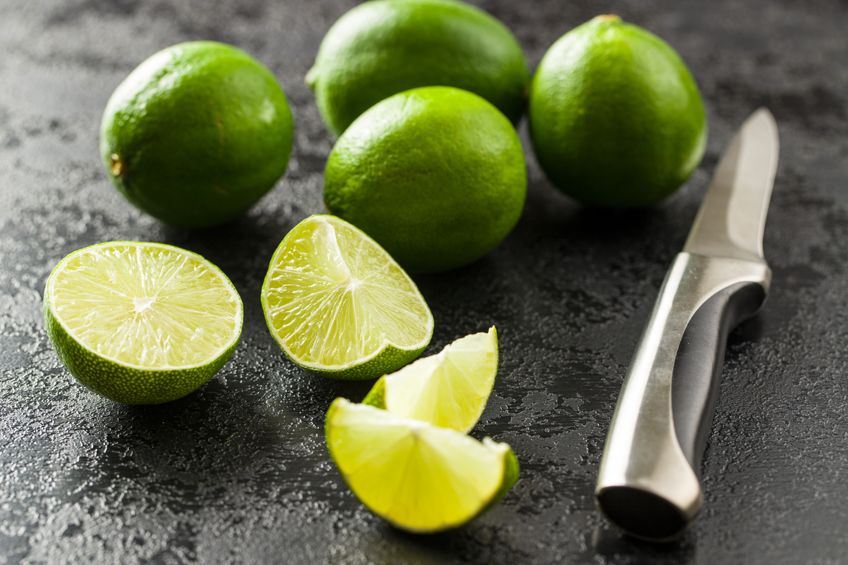
The color is so popular because it communicates energy and youth and is likely to attract attention. Lime is a fresh color, and many companies use the color in their branding and advertising. On the other hand, lime green also has some negative connotations. For example, it can represent something toxic or can be a symbol of evil or potions. When looking at the Disney movies like Sleeping Beauty or Snow White, the evil queens both have bright glowing lime green eyes.
When using lime, it produces more positive feelings and can help to bring balance and promotes calmness as well as clarity. Lime can successfully be used as an accent color and works well with neutral colors like white, tan, or gray. Be careful when decorating with lime as it can become too intense if you use too much.
Adding hints of lime is what you are looking for to brighten up a room.
Even though lime is a color that can work well with most other colors, there are a few exceptions. Lime looks good next to fuchsia. This is because this is the complementary color to lime. Looking for an energizing palette, combine lime with yellows, oranges, and shades of pink or purple. Lime stands out even more if paired with a darker blue or black. Below are the more popular colors you can pair lime with:
| Shade | Hex Code | CMYK Color Code | RGB Color Code | Color |
| Fuchsia | #ff00ff | 0, 100, 0, 0 | 255, 0, 255 | |
| Orange | #ffa500 | 0, 35, 100, 0 | 255, 165, 0 | |
| Yellow | #ffff00 | 0, 0, 100, 0 | 255, 255, 0 | |
| Violet | #7f00ff | 50, 100, 0, 0 | 127, 0, 255 | |
| Hot Pink | #ff69b4 | 0, 59, 29, 0 | 255, 105, 180 | |
| Tangerine | #f28500 | 0, 45, 100, 5 | 242, 133, 0 | |
| Black | #000000 | 0, 0, 0, 100 | 0, 0, 0 | |
| White | #ffffff | 0, 0, 0, 0 | 255, 255, 255 |
When dealing with the hex codes for website designs, there are two varieties of lime you can use, both under the name of “lime”. The first is the lime green with the hex code #00ff00 and is a little lighter than the next lime color with the hex code #32cd32. Both are included in the table below.

| Shade | Green Hex Code | CMYK Green Color Code | RGB Green Color Code | Green Color |
| Lime Green 1 | #00ff00 | 100, 0, 100, 0 | 0, 255, 0 | |
| Lime Green 2 | #32CD32 | 76, 0, 76, 20 | 50, 205, 50 |
Mint Green
Mint green is a popular color as it is calming yet provides a certain vibrancy. The color is also known as spring green and can be found on the color wheel mid-way between green and cyan. The color is refreshing, similar to what the mint herb also represents. Not only does it bring calm, but it is also associated with health and creativity. The mint green color is a favorite when it comes to producing a chocolate chip and mint ice cream.
In design, the color can easily pair with white, royal blue, violet, and beige.
| Shade | Green Hex Code | CMYK Green Color Code | RGB Green Color Code | Green Color |
| Mint green | #98fb98 | 39, 0, 39, 2 | 152, 251, 152 |
Ming Green Color
When searching for Ming green online, you might come up more on the lines of mint green. However, the Ming green color does exist as an American version of the color of jade. Catalogs have been found as far back as the 1930s and 1960s, where Ming green was quite a popular color, especially kitchen cabinets and bathrooms. The color can be defined as a mixture of green and cyan.
| Shade | Green Hex Code | CMYK Green Color Code | RGB Green Color Code | Green Color |
| Ming Green Color | #3aa278 | 64, 0, 26, 36 | 58, 162, 120 |
Creating an Acrylic Green Color Palette
The basic description of how you make green is simply a combination of blue and yellow. However, there are many shades and variations of both blue and yellow. For example, ultramarine blue, cobalt blue, and cadmium yellow, or yellow ochre. Each of these colors has a color bias, meaning that the color will tend to lean towards a warmer or cooler bias on the color wheel. For example, ultramarine blue contains hints of red. Cadmium yellow light has a green bias and leans towards the cooler colors. So, a green color palette can be more than a single option, it is not as simple as grabbing any blue or yellow to make green. Once you gain a better understanding of color theory and mixing colors, you will be able to create the best and most vivid colors.
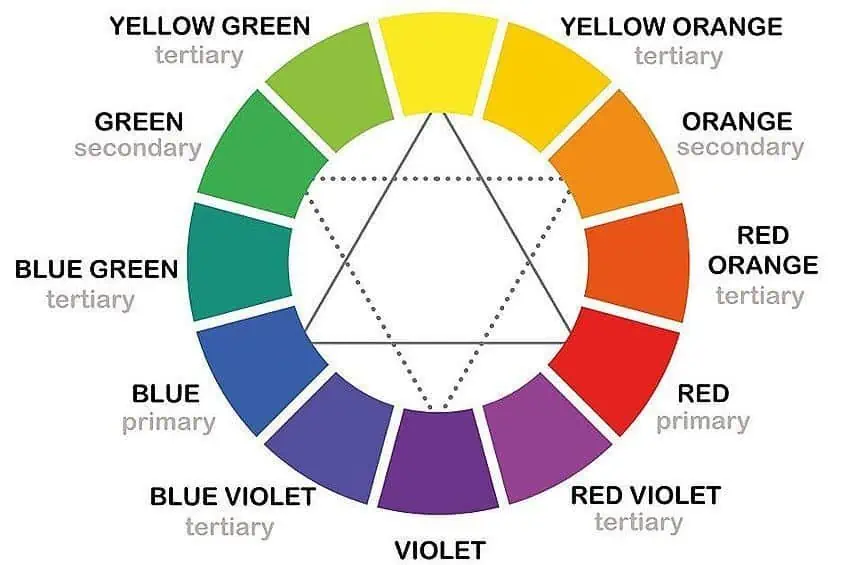
Not only will learning about mixing colors help to create the best colors, but it will also help you to avoid making mistakes. For example, if you were to mix a warm blue with a warm yellow, what would happen? Since both of these colors have hints of red, you will ultimately be mixing all three of the primary colors. Once this happens, you will land up with a muddy color that might not be what you expected. The best way to learn is to experiment and create your own green color palette swatch with a few different yellows and blues to see what happens.
Let us see which colors you can blend for a vivid green.
| Shade | Hex Code | CMYK Color Code | RGB Color Code | Color |
| Cadmium Yellow Light | #f8eb00 | 0, 5, 100, 3 | 248, 235, 0 | |
| Manganese Blue | #242d36 | 33, 17, 0, 79 | 36, 45, 54 |
Both these colors lean more towards a green bias, so they should produce a vivid green. You can try using any blue that falls more into the blue-green spectrum and then mixes in any yellow and see what happens.
Mixing Green Colors
Pick out a spot to paint, somewhere that has plenty of space and where you can work freely. Round up all the materials required for your acrylic painting project. This includes paintbrushes, your chosen blue, and yellow paint, a paint palette, one or two cups of water, and a popsicle stick or palette knife. The popsicle stick or palette knife is best for mixing the paint than the brush and provides a smoother blended color. Instead of a palette, you can also use a paper plate for mixing the paint colors. When it comes to watercolors, the paintbrush is sufficient for mixing.
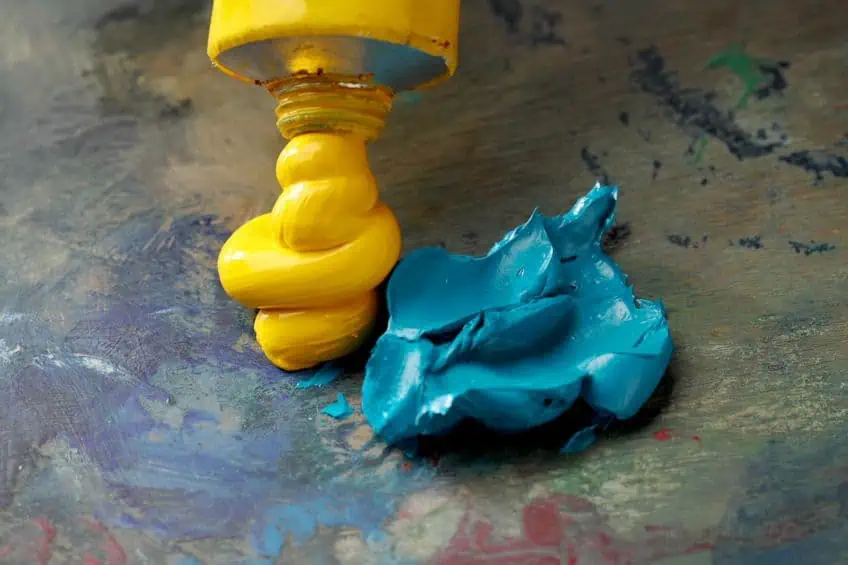
Once you have laid down some newspaper and have all the materials close at hand, you can start painting. Take some yellow paint and place it onto your mixing palette, about the size of a coin. This amount will be considered one part of the mix of colors. Place the same amount of blue paint close to the yellow paint. An equal amount of both colors should produce a basic green you can work from. Blend the two paints until you arrive at an evenly mixed green color. This is where mixing with a popsicle stick or your palette knife can come in handy, especially if you are using thick-based paint like acrylic. You can then use the paint, just remember as you paint to create a color swatch so that you know how to mix the color in the future.
To create a brighter lime green, keep adding in small amounts of the yellow paint until you reach the color you want. You can also add in white to create a lighter more minty green color.
Always add in small amounts of paint as you go. You can create a dark green by adding more blue to the mixture, for example, one part yellow and two parts blue. You can also consider adding a smaller amount of black to the green. However, it is preferable to use the colors you are working with to lighten or darken the green. So, add small amounts of yellow to lighten and blue to darken. By adding red you can also tone down the green color, to create more of a darker olive green. You can also blend a green by leaving out the yellow. Try using a cool and bright shade of orange to replace the yellow. Below are a few color options for creating green colors. You can also substitute the cadmium yellow with yellow ochre, cadmium yellow light, or cadmium lemon.
- Cadmium yellow and ultramarine blue: The reddish bias of ultramarine blue create a green with brown hints
- Cadmium yellow light and cobalt blue: Creates a color that resembles permanent green
- Cadmium yellow light and phthalo blue: Will create a phthalo green
| Shade | Green Hex Code | CMYK Green Color Code | RGB Green Color Code | Green Color |
| Permanent Green | #009669 | 100, 0, 30, 41 | 0, 150, 105 | |
| Phthalo Green | #123524 | 66, 0, 32, 79 | 18, 53, 36 |
Using Green Shades for Decorating
As we have mentioned, green colors are associated with balance, harmony, health, and renewal. Shades of green colors are popular and are something you should be able to incorporate into your home. The color helps create an environment that is welcoming and calming. You can use green colors as accent walls, subtly bringing the outdoors inside, or be bolder and design an entire room around your chosen green shade.

When incorporating green into a home setting and using the right amount, it can be applied to most rooms in the home. The living room is the perfect place to add some green shades as a color to the wall, bringing it in with shades of green furniture, or using other accessories as desired. Softer, muted shades of green color can be substituted for some neutral colors, producing a fresher look. Added to trim and doors in a white room, green can bring more life into the room without it becoming overpowering.
Bedrooms, study rooms, or bathrooms can also incorporate shades of green, as it is a calming color that will create a sense of tranquility. This is both excellent for creating a space for sleeping or participating in more academic activities. The correct type of green can also be used for a similar effect in bathrooms. You do not have to go all the way green, simply adding in green curtains or bedding can bring in green to good effect. Thankfully, there are many hues and types of green to choose from, there should be a color that suits your needs.
Green represents freshness and has been known to help stimulate the appetite. This is why it is a good color to include in kitchens and dining areas. You can combine colors for an even better effect, adding oranges or yellows can create an even more welcoming atmosphere.
If you do not wish to paint, try adding in accessories like green plates, mugs, spice containers, or even a bowl of green fruits. Green is a versatile color and there are many different green color palettes, many of these can provide both a relaxing and energizing effect at the same time. Consider a few of the green color combinations below for your next decorating project.
Pale Green and Orange
When decorating a small space, colors like fern green and a pale orange together with gray can create a relaxing and welcoming space. The color orange is a nice complementary color to green, which brings a little more life into the room.

Forest Green and Brown
Both of these earthy tones can work well together. More colors that work well with forest green include burgundy, navy blue, and harvest yellow.
Brown is a solid neutral color, while green will bring on more vibrancy and energy into a room.
Lime Green and Pink
Are you looking to add a pop of color, be daring in your color combinations by using lime green and pink. This eye-catching combination will create a stimulating environment that is best used in spaces where you wish to stimulate creativity.
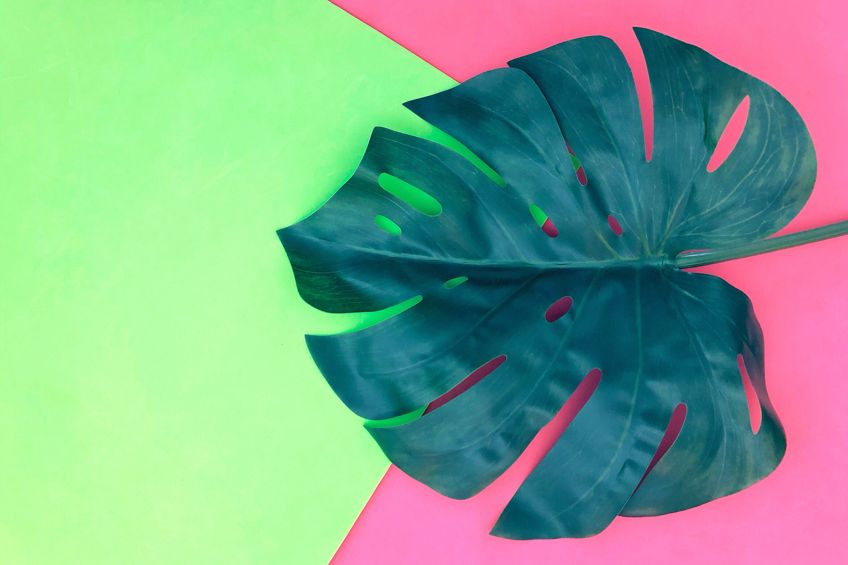
Pastel Green and Tan
This more subdued color combination is quite the opposite of the above, as it creates a more calming atmosphere. These colors and other greens and earthy subdued tones are perfect for creating a relaxing environment.
This is a lovely color combination.
Ming Green Color and White
Grays and white work well in providing a clean and crisp feeling. However, combining it with a shade of green can add in a bit more luxury. For example, lighter gray walls and white trim, and to this add a green couch, which adds a definite focal point to the room.

Accenting Light Green
Again, use complementary colors, ones that lay opposite your greens on the color wheel. You can consider using the following colors to help bring out a light green color. The best choice would be to go for various shades of purple.
| Shade | Hex Code | CMYK Color Code | RGB Color Code | Color |
| Fuchsia/Magenta | #ff00ff | 0, 100, 0, 0 | 255, 0, 255 | |
| Violet | #7f00ff | 50, 100, 0, 0 | 127, 0, 255 | |
| Lavender | #e6e6fa | 8, 8, 0, 2 | 230, 230, 250 | |
| Grape | #6f2da8 | 34, 73, 0, 34 | 111, 45, 168 |
There are so many shades of green color that can be used for a variety of applications from painting a wall to creating an amazing art piece. Whatever you want to achieve, there is a green color that will work for you.
Frequently Asked Questions
How Do You Mix Green Acrylic Paint?
Acrylic paint is a relatively easy medium to work with and mixing colors can be relaxing and fun. Mixing green is simple, all you need are equal amounts of two primary colors, yellow and blue. Blend these two paint colors on a palette until evenly combined. You can then adjust the green color as you see fit. You can change the shade and tint and make it lighter or darker.
Are There Lots of Different Types of Green?
There are many types of green, over 200 colors from dark to light green, and everything in-between. Some of the names clearly describe some form of green like forest green or fern green.
What Do Green Colors Signify?
Green can have both positive as well as negative associations. Green is mostly linked to nature and everything natural. The color also symbolizes renewal and growth and is calming. Green can also be associated with envy or feeling ill.
What Type of Color is Forest Green?
The name evokes scenes of forests and trees and is considered a dark green color. This color directly represents the environment, and because of this, the color has been used in many campaign designs supporting green causes.
What Colors Work Well With Green?
Whatever green color you prefer, whether it is olive green or pale green, all green colors provide a fresh and inviting look. Green works well with most colors including neutral colors like gray, white, and brown. However, it can also work with blues, pinks, yellow and other shades of color.
Is Sage Green a Good Color For Interior Décor?
Sage is a very good color to use when decorating your home. This is because the color is a rich hue of green, and yet it also provides a soft look. Sage can work extremely well when used in a room that has a neutral tone palette. The color sage tends to adapt wherever it is placed, working, and appearing a little different, depending on what colors you use.
Why Can We See More Green Shades of Color?
Green colors are seen more easily than other colors because of how the eye perceives the color. Wavelengths stimulate the rods and cones of the eye, and these light wavelengths are translated into color. The color green stimulates more of the cones than other colors and the color wavelength is more available to the eye. Green is the most visible when viewed from a distance, which is why green is one of the important colors in traffic lights.
Duncan graduated with a diploma in Film and TV production from CityVarsity in 2018, after which he continued pursuing film while taking on a keen interest in writing along the way. Since having graduated, he began working as a freelance videographer, filming a variety of music videos, fashion and short films, adverts, weddings and more. Throughout this, he’s won a number of awards from various film festivals that are both locally and internationally recognized. However, Duncan still enjoys writing articles in between his filming ventures, appreciating the peace and clarity that comes with it.
His articles focus primarily around helping up-and-coming artists explore the basics of certain colors, how these colors can be paired with other shades, as well as what colors are created when you mix one with another. All while relating these shades to historically significant paintings that have incorporated them into their color palette. As a lover of the arts himself, he takes great interest in the Renaissance era of paintings, an era that has directly inspired many of his favorite films.
Learn more about Duncan van der Merwe and about us.



